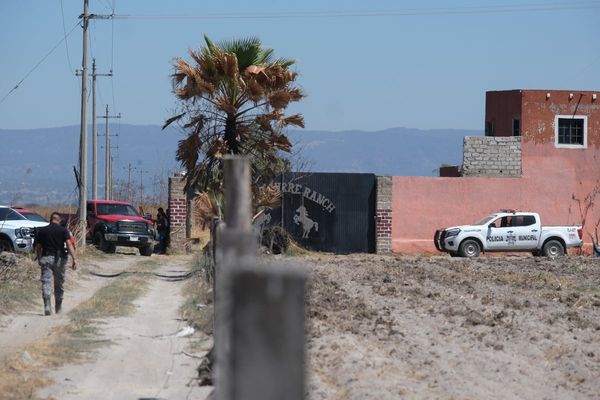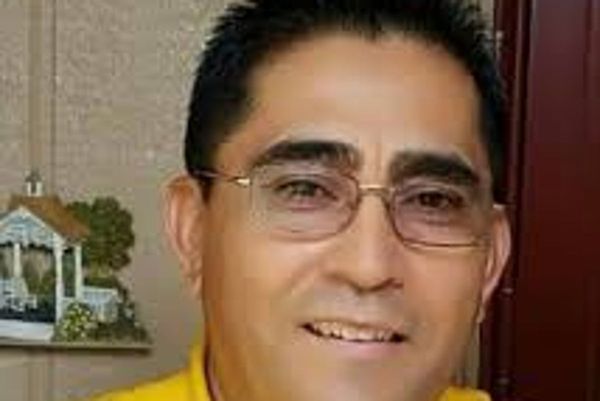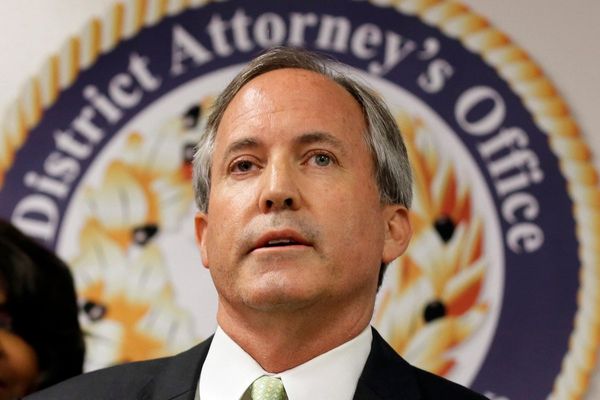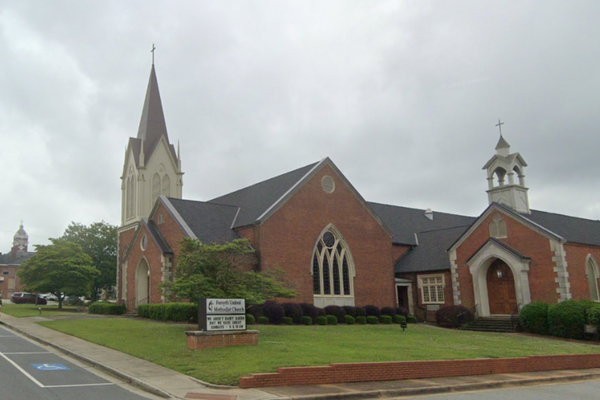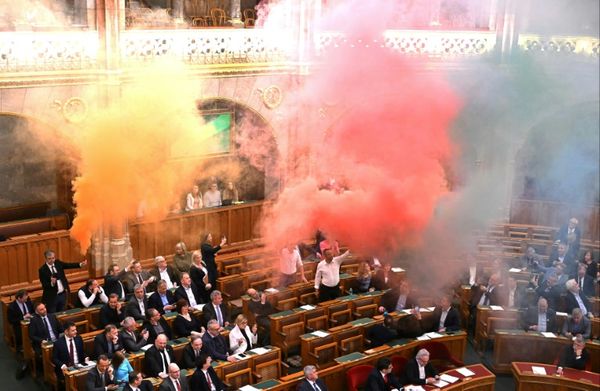MIAMI — With the milestone of a $1 billion settlement behind them, relatives of the 98 people who died in the Surfside condominium building collapse have begun private hearings this week with a Miami-Dade judge who will calculate each victim’s monetary value — a process partly guided by actuarial equations but also fraught with painful emotions.
While relatives and their lawyers can make the case to Circuit Judge Michael Hanzman that the victims all met the same tragic fate — not unlike the passengers in a plane crash — Florida law dictates that they won’t receive equal shares of the landmark settlement. Inevitably, some will get far more than others.
And under state law, some grieving relatives like brothers and sisters might receive some damages while others could be entitled to little or nothing because of who is considered first in line to qualify for the payouts.
“Other than the immediate aftermath, when we were all waiting in agony, this phase will be the most painful, heartbreaking part of the entire ordeal,” said Pablo Rodriguez, a Miami attorney whose mother and grandmother died in the collapse.
The judge’s task of divvying up the massive class-action settlement, reached last month with an array of defendants, is daunting. One part of the calculation is based on a victim’s age, occupation and expected lifetime earnings. But he will also consider the intangible factor of ongoing pain and suffering endured by relatives of the various spouses, children, parents, grandparents, sisters and brothers who died when the oceanfront Champlain Towers South building collapsed in June of last year.
Those intangibles abound. The victims range in age from 1 to 92. They include lawyers, doctors, accountants, engineers, actors, college students, retirees, a musician, a flight attendant, a Pilates instructor and a rabbi. There were the Guara sisters, Lucia, 10, and Emma, 4, who died with their parents and whose future careers and earnings can only be guessed at — Lucia aspired to be an astronaut and Emma wanted to be a princess. There was Elena Chavez, 88, who was still working as a travel agent. Theresa Vasquez, 36, who died with her parents, was a LiveNation executive and former Miami Beach DJ. Nicole Langesfeld, 26, who died with her husband, was a young attorney who had impressed Hanzman during a hearing.
Hanzman, assisted by an accountant and a retired judge who has specialized in personal injury and wrongful death cases, is scheduled to complete his review of dozens of damage claims by the end of August. They will consult tax returns, pension records, actuarial tables and income data from the Bureau of Labor Statistics and the U.S. Census Bureau.
The results won’t be made public, unlike the settlement agreement approved by the judge. He is expected to distribute all of the settlement money — less $100 million that dozens of plaintiffs’ lawyers have requested for their hourly work on the class- action negligence case, which resulted in one of the largest settlements in Florida history.
“The key for this case is consistency and fairness,” said South Florida attorney Michael Goldberg, who was appointed by Hanzman as the receiver for Champlain Towers South’s condo association and serves as a neutral party in the class-action litigation. “None of the victims are going to know what the others are getting.”
Although the process might be familiar to a seasoned judge like Hanzman, many of the Champlain South damage claims are complicated by the fact that some families were almost entirely wiped out by the tragedy, including parents and children. Meanwhile, other victims have no “survivors” under the definition of Florida’s wrongful death law, which only recognizes a spouse, parent or child under the age of 25. As a result, an adult brother or sister might not be entitled to as much money, including lost economic support, even if they are the closest relative.
$1 million minimum
At minimum, Hanzman has agreed to pay $1 million per victim to each victim’s representative. In those instances, the relatives don’t have to go through a claims hearing in front of the judge. But others, including those who qualify as survivors under state law, are choosing to go through the sensitive review process — in essence, presenting a loved one’s biography — and might receive awards in the tens of millions of dollars.
Attorney Rachel Furst, whose law firm Grossman Roth Yaffa Cohen is representing the relatives of 11 people who died in the Surfside building collapse, said the advantage of Hanzman “doing double duty” as both the judge and claims administrator is that he “understands the nature of the tragedy” and “doesn’t have to start from scratch.”
“He’s wearing a different hat in this process,” Furst said. “Florida’s wrongful death law compensates the living. The law does not assign a value to a life; instead it compensates the survivors for their loss, which is their suffering and the support and services they’ve lost.”
Attorney Kenneth Feinberg, the special master who oversaw the U.S. government’s $7 billion distribution of funds to the relatives of about 5,300 death and injury victims in the 9/11 terrorist attacks, said he has one piece of advice for the Miami-Dade judge: “Brace yourself.”
“Calculating what each victim has earned over a lifetime is not hard; the hard part is emotion,” said Feinberg, who along with his colleagues conducted about 1,450 private hearings over 33 months with the 9/11 victims’ families. The average wrongful death award was $2 million, and the average physical injury payout was $400,000.
Feinberg wrote about the process in his book “What is Life Worth?” that is now a Netflix movie. He said he would have been better off with a divinity or psychology degree in dealing with the 9/11 families.
“What you find in these confidential hearings is that they don’t want to talk about money,” he said. “They want to vent about life and how unfair it is. ... Or they want to validate what they have lost — they want you to see what those murderers did to their angel.”
Psychological injury claims
In addition to figuring out how much each wrongful death claim is worth, Judge Hanzman must also resolve injury claims. There were only three survivors from the collapsed mid- and oceanfront sections of the condo building. They are: Jonah Handler, a 15-year-old who was rescued from atop the rubble after he and his mother, Stacie Fang, 54, fell from her 10th floor condo unit. Fang didn’t survive. In addition, Angela Gonzalez, 45, and her daughter, Deven Gonzalez, 16, were rescued from the rubble with severe injuries after falling from their ninth-floor unit. Edgar Gonzalez, 45, who was Angela’s husband and Deven’s father, did not survive.
At the same time, people who were in the section of Champlain Towers South that did not collapse are eligible to receive at least $50,000 each for the trauma, psychological harm and physical injuries they suffered. That would include about three dozen owners and tenants who lived in the front units of the 12-story building facing Collins Avenue that were later demolished during the search and rescue effort.
Many who escaped that night thought they were going to die and are struggling to rebuild their lives and resume their jobs while coping with PTSD, depression, insomnia, survivors’ guilt, inability to concentrate. They are seeing psychiatrists and taking medication. Still other owners who were not present when the building fell are also eligible for $50,000.
Miami attorney Judd Rosen, who is representing Jonah Handler and his mother’s estate, along with another death victim’s spouse, said the “challenge for [Hanzman] is to take off his judge’s hat and put on a juror’s.”
“Judge Hanzman is now placed squarely in the shoes of the victims,” Rosen said. “He has to feel the pain and the emotion of the victims’ families. The impossibility of his task is not just to decide fair compensation, but also to find a way not to take all this sadness home with him.”
Older children may be shut out
The nature of the Surfside tragedy, which claimed multiple generations of some families, combined with Florida’s qualified beneficiary rules, could make the claims of certain relatives for economic support or pain and suffering worthless — at least in terms of a legal settlement. For instance, brothers or sisters of victims won’t be eligible for their lost future earnings. There are several relatives who fall into that category.
After enduring 13 months of sorrow, Pablo Rodriguez is faced with the grim reality of Florida law: He and his brother are not considered “statutory survivors” of their mother, Elena Blasser, 67, who died along with her mother, Elena Chavez. Their stepfather, Joseph Blasser, who was in Panama when the building collapsed, is first in line to collect damages in the class-action case because he is the only beneficiary as Elena’s spouse under state law. (Separately, the grandmother, Elena Chavez, has a son who is filing a damage claim in her name.)
But Elena also left a will, a factor that complicates the mother’s estate and possibly the judge’s award decision. Elena, a retired teacher, split her modest assets between her two sons, who are not on good terms with their stepfather. Blasser, her husband, is challenging the validity of Elena’s will.
“It’s a continual gut punch,” said Rodriguez, who believes the mother’s damages in the class-action case should go to him and his brother. There’s also a question about their grandmother’s award.
“In a situation like mine, the children don’t matter,” Rodriguez said. “We had a very close relationship with my mother and grandmother, but we might as well have been complete strangers under Florida’s law.”
Rodriguez, an attorney himself who specializes in estate and probate law, has studied the wrongful death statutes of all 50 states and says Florida and Maine are the most restrictive. Most states adhere to statutes that divide the assets of an estate along family lines, he said.
That “takes out the guesswork and the hurt feelings among family members for the purpose of equitable distribution,” Rodriguez said.
“Florida’s statute is not intended to cover a mass casualty event like Surfside or a plane crash or a school shooting,” Rodriguez said. “It’s more applicable to a trial with a jury verdict for one or a limited number of victims. Here we have a pot to be divided and you’re putting families in a position to justify what each loved one is worth while treating some immediate family members as irrelevant. It adds another layer of pain.”
In the case of the Velasquez family — parents Julio, 67, and Angela, 60, died with daughter Theresa, who was visiting from Los Angeles — the closest surviving relative is the couple’s son and Theresa’s older brother, David. Theresa had a girlfriend but wasn’t married, had no children, her parents are dead and her only sibling, who was not dependent on her. The brother is ineligible for awards for her lost earnings over her lifetime as well as for pain and suffering.
But David Velasquez may be eligible for a pain and suffering benefit for the loss of his parents.
In another state, the brother may have collected well over $10 million in damages. But in Florida, he will probably only collect the minimum of $1 million per family member allotted by Hanzman, for a total of $3 million. David Velasquez — unlike the Rodriguez brothers — is first in line to collect the payouts because his sister had no other survivors.
Three generations of the Cattarossi family in unit 501 also perished that night. Gino Cattarossi, an 89-year-old retired engineer from Argentina, and his wife, Graciela Ponce de León, 86, a retired diplomat from Uruguay, were parents to Graciela, 48, a photographer, and grandparents to her daughter, Stella, 7. Their daughter Andrea, 56, an architect, had flown in from Buenos Aires to help out as Gino was to undergo heart surgery to replace a pacemaker.
All five died in the condo building’s collapse.
Gino and Graciela Ponce de Leon’s surviving children are Marcelo and Joanne, but because they are over 25 and were not dependent on their sisters, they cannot claim damages for their siblings’ future earnings. However, they may be able to collect pain and suffering damages for the loss of their parents.
But in the case of the two little Guara girls, who were buried in the same casket, no one can claim pain and suffering for their deaths because their parents died with them and their grandparents are not categorized as “survivors” under state law.
Nicole “Nicky” Langesfeld, 26, and Luis Sadovnic, 28, met at the University of Florida and married six months prior to the collapse. They lived in unit 804, which was owned by his grandfather. They died together. She was a commercial litigator for the Reed Smith law firm and he was an entrepreneur with a master’s degree in business administration. They had no children. Their parents stand to be awarded substantial damages for pain and suffering and future earnings for the loss of children pursuing promising careers in the prime of their lives.
In several instances, spouses were elsewhere when the building fell; they are considered next of kin. In one case, a woman who was out of town lost her husband and their 5-year-old son.
“In a catastrophe like Champlain South, with 98 unique cases, you see the lack of logic and fairness in Florida’s law,” said Rodriguez, the Miami attorney who lost his mother and grandmother. “Many relatives are confused and saddened and dreading this emotional claims process because we all know that no amount of money is bringing any closure, any accountability or anyone back to us.”
———
